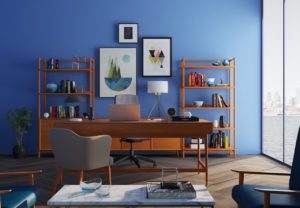A well-executed office fitout can significantly enhance the functionality of a workspace, making it a key investment for any organization. This article delves into the essential considerations for maximizing space and efficiency in office fit-outs and highlights how partnering with a professional office fit out company can help achieve these goals.
Understanding Office Fitouts
An office fitout involves designing and implementing the interior layout and furnishings of a commercial space. It encompasses everything from space planning and furniture selection to lighting and acoustic treatments. The primary objective of an office fitout is to create a functional, aesthetically pleasing, and productive environment that aligns with the organization’s needs and brand identity.
Critical Considerations for Maximizing Space and Efficiency
1. Space Planning and Layout
Effective space planning is the cornerstone of a successful office fitout. A well-thought-out layout maximizes available space and ensures that all areas are utilized efficiently. Critical aspects of space planning include:
Functional Zones: Define distinct zones within the office for various functions, such as workstations, meeting rooms, collaborative areas, and break rooms. This zoning helps create a cohesive workflow and prevents overcrowding in any one area.
– Flow and Connectivity: Ensure the layout facilitates smooth movement between different zones. Avoid creating bottlenecks or barriers that can disrupt work flow and communication.
– Modular furniture and movable partitions can help adapt the space to changing requirements or team sizes.
2. Ergonomics and Comfort
Ergonomic considerations can enhance productivity and reduce the risk of work-related injuries. Key ergonomic elements include:
– Adjustable Furniture: Invest in adjustable desks and chairs that accommodate various body types and work preferences.
– Lighting: Proper lighting reduces eye strain and creates a pleasant work environment.
– Acoustic Treatment: Address noise levels by incorporating acoustic panels and sound-absorbing materials. A quieter workspace contributes to better concentration and fewer distractions.
3. Technology Integration
Modern offices rely heavily on technology to support daily operations. Integrating technology into the office fitout can streamline processes and enhance efficiency. Consider the following:
– Connectivity: Ensure the office has adequate power outlets, data ports, and high-speed internet connectivity. The plan is to place network infrastructure and charging stations to support various devices.
– Smart Solutions: Incorporate intelligent technologies such as automated lighting, climate control systems, and digital meeting room solutions. These innovations can improve energy efficiency and simplify management.
– Collaborative Tools: Designate areas for collaborative work and integrate tools such as interactive whiteboards, video conferencing equipment, and project management software.

4. Branding and Aesthetics
An office fitout should reflect the company’s brand identity and create a positive impression on clients and visitors. Effective branding and aesthetics contribute to a cohesive and engaging work environment. Consider:
– Design Theme: Choose a design theme that aligns with the company’s brand values and culture. This can include colour schemes, materials, and decorative elements that reinforce the brand’s identity.
– Signage and Wayfinding: Implement clear signage and wayfinding systems to help employees and visitors navigate the space easily. Consistent branding in signage can also reinforce the company’s image.
– Art and Decoration: Incorporate art and decorative elements that enhance the office’s ambience and create a visually appealing environment. This can include artwork, plants, and unique design features.
5. Sustainability and Efficiency
Incorporating eco-friendly practices and materials can reduce the environmental impact of the office fitout and contribute to cost savings. Key considerations include:
– Energy-Efficient Systems: Install energy-efficient lighting, HVAC systems, and appliances to reduce energy consumption and lower utility costs.
Sustainable Materials: Use environmentally friendly materials, such as recycled or rapidly renewable resources. Sustainable materials contribute to a healthier indoor environment and support green building certifications.
– Waste Reduction: Implement waste reduction practices by recycling and repurposing materials.
Partnering with an Office Fitout Company
Working with a professional office fitout company can streamline designing and implementing an office fitout. These experts bring valuable experience and insights to ensure the fitout meets all functional, aesthetic, and regulatory requirements. Benefits of partnering with an office fitout company include:
– Expertise: Office fitout companies deeply understand design principles, space planning, and project management. They can provide tailored solutions that address specific needs and challenges.
– Project Management: This ensures the project stays on track, within budget, and meets quality standards.
– Vendor Relationships: Established fitout companies have relationships with suppliers and contractors, which can result in better pricing and access to high-quality materials and products.
Maximizing space and efficiency in office fitouts requires careful consideration of layout, ergonomics, technology, branding, and sustainability. Businesses can create work environments that enhance productivity, employee satisfaction, and overall organizational effectiveness by focusing on these critical areas. Partnering with a professional office fitout company ensures these considerations are expertly addressed, leading to a successful and impactful office transformation.



